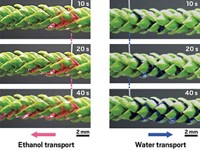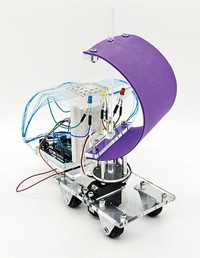Advertisement
Grab your lab coat. Let's get started
Welcome!
Welcome!
Create an account below to get 6 C&EN articles per month, receive newsletters and more - all free.
It seems this is your first time logging in online. Please enter the following information to continue.
As an ACS member you automatically get access to this site. All we need is few more details to create your reading experience.
Not you? Sign in with a different account.
Not you? Sign in with a different account.
ERROR 1
ERROR 1
ERROR 2
ERROR 2
ERROR 2
ERROR 2
ERROR 2
Password and Confirm password must match.
If you have an ACS member number, please enter it here so we can link this account to your membership. (optional)
ERROR 2
ACS values your privacy. By submitting your information, you are gaining access to C&EN and subscribing to our weekly newsletter. We use the information you provide to make your reading experience better, and we will never sell your data to third party members.
Materials
Nanoparticle Hydrogel Hybrid
Tiny silicon columns bend or straighten with changes in humidity
by Bethany Halford
January 29, 2007
| A version of this story appeared in
Volume 85, Issue 5

A KEEN SENSITIVITY to their environment allows venus flytraps to ensnare their insect meals. Gently graze their trigger hairs, and the carnivorous plants will clamp together their jawlike leaves. Materials scientists have now managed to replicate this acute environmental sensitivity on the nanometer scale (Science 2007, 315, 487).
Joanna Aizenberg, of Bell Laboratories in Murray Hill, N.J., and coworkers created their own adaptive material by partially covering an array of slender silicon nanocolumns with a layer of flexible hydrogel.
These tiny spikes move in response to changes in humidity. In moist air, water plumps up the hydrogel so that the nanocolumns stand upright. Dry surroundings strip moisture from the hydrogel, making it pull taut across the array, tilting the columns.
By etching patterns onto the array's substrate, Aizenberg's group can choreograph the columns' movement. They can prompt the spikes to snap together in four-pronged snares or to blossom into a field of microflowers.
"Such complex patterned movements would be impossible in the other reported artificial systems, in which polymers are actuated by an electric or magnetic field," Aizenberg says. Potential applications include a coating that's hydrophobic in humid air and hydrophilic in dry air.





Join the conversation
Contact the reporter
Submit a Letter to the Editor for publication
Engage with us on Twitter